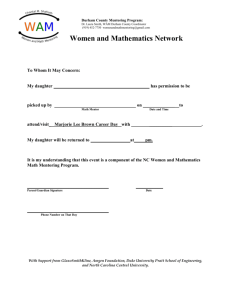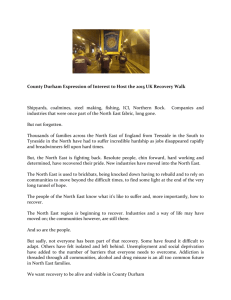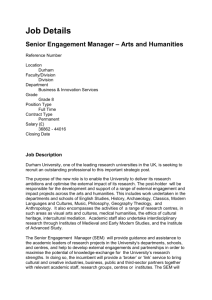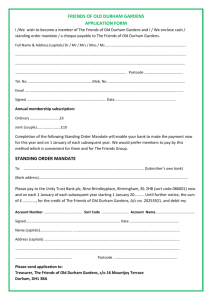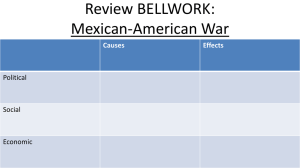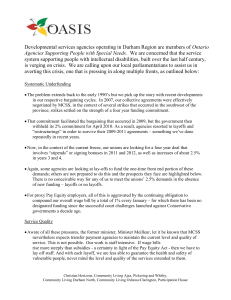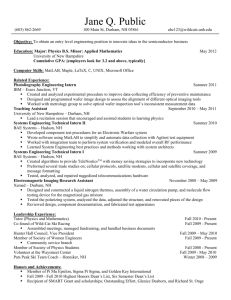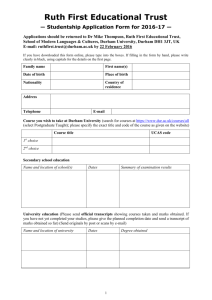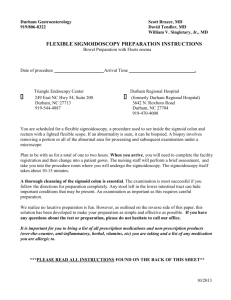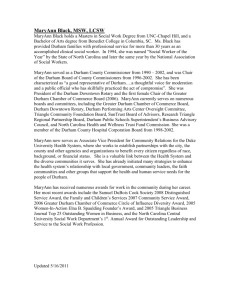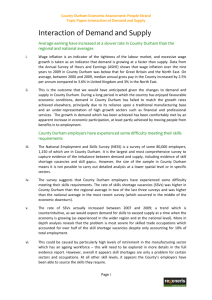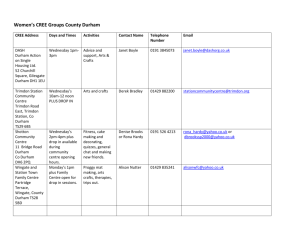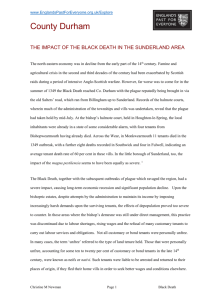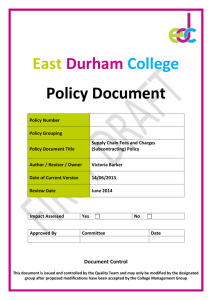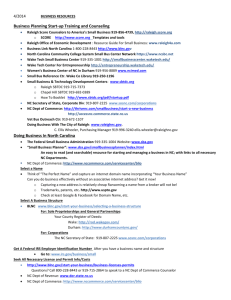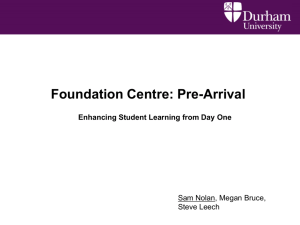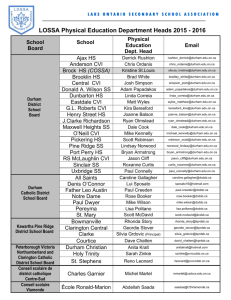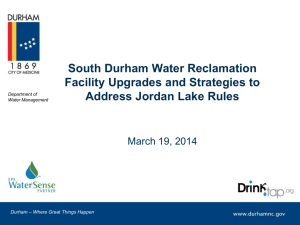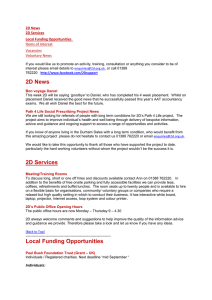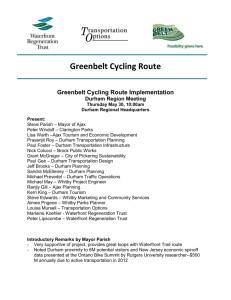Sean Smith, Durham University
advertisement
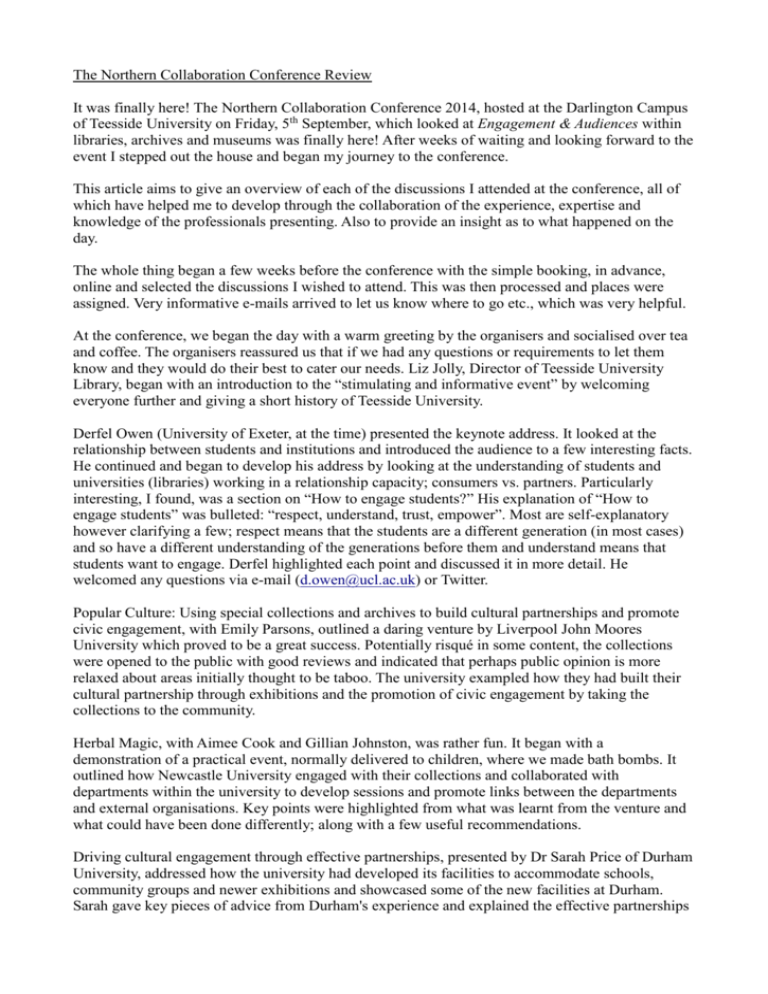
The Northern Collaboration Conference Review It was finally here! The Northern Collaboration Conference 2014, hosted at the Darlington Campus of Teesside University on Friday, 5th September, which looked at Engagement & Audiences within libraries, archives and museums was finally here! After weeks of waiting and looking forward to the event I stepped out the house and began my journey to the conference. This article aims to give an overview of each of the discussions I attended at the conference, all of which have helped me to develop through the collaboration of the experience, expertise and knowledge of the professionals presenting. Also to provide an insight as to what happened on the day. The whole thing began a few weeks before the conference with the simple booking, in advance, online and selected the discussions I wished to attend. This was then processed and places were assigned. Very informative e-mails arrived to let us know where to go etc., which was very helpful. At the conference, we began the day with a warm greeting by the organisers and socialised over tea and coffee. The organisers reassured us that if we had any questions or requirements to let them know and they would do their best to cater our needs. Liz Jolly, Director of Teesside University Library, began with an introduction to the “stimulating and informative event” by welcoming everyone further and giving a short history of Teesside University. Derfel Owen (University of Exeter, at the time) presented the keynote address. It looked at the relationship between students and institutions and introduced the audience to a few interesting facts. He continued and began to develop his address by looking at the understanding of students and universities (libraries) working in a relationship capacity; consumers vs. partners. Particularly interesting, I found, was a section on “How to engage students?” His explanation of “How to engage students” was bulleted: “respect, understand, trust, empower”. Most are self-explanatory however clarifying a few; respect means that the students are a different generation (in most cases) and so have a different understanding of the generations before them and understand means that students want to engage. Derfel highlighted each point and discussed it in more detail. He welcomed any questions via e-mail (d.owen@ucl.ac.uk) or Twitter. Popular Culture: Using special collections and archives to build cultural partnerships and promote civic engagement, with Emily Parsons, outlined a daring venture by Liverpool John Moores University which proved to be a great success. Potentially risqué in some content, the collections were opened to the public with good reviews and indicated that perhaps public opinion is more relaxed about areas initially thought to be taboo. The university exampled how they had built their cultural partnership through exhibitions and the promotion of civic engagement by taking the collections to the community. Herbal Magic, with Aimee Cook and Gillian Johnston, was rather fun. It began with a demonstration of a practical event, normally delivered to children, where we made bath bombs. It outlined how Newcastle University engaged with their collections and collaborated with departments within the university to develop sessions and promote links between the departments and external organisations. Key points were highlighted from what was learnt from the venture and what could have been done differently; along with a few useful recommendations. Driving cultural engagement through effective partnerships, presented by Dr Sarah Price of Durham University, addressed how the university had developed its facilities to accommodate schools, community groups and newer exhibitions and showcased some of the new facilities at Durham. Sarah gave key pieces of advice from Durham's experience and explained the effective partnerships between the university and external organisations, and how these have been a driving force for cultural engagement and also for what lies ahead for Durham. The closing keynote address, delivered by Ann Rossiter (SCONUL), looked at collaboration. The presentation covered the prisoner's dilemma, the collaboration spectrum and models of cooperation (dialectical/dialogical); and was particularly interesting from a theory perspective with a few useful recommendations too. The conference was brought to a close by Sue White (Northern Collaboration Chair). Overall a productive and interesting day and I'm very pleased I attended. There are many elements I have stored away for future reference and some that I can apply to my current studies. It was fantastic to see how other organisations have done things and to have theories and ideas illustrated with working examples was fantastic. I would recommend those who wish to collaborate with others and who are interested in learning from other's experiences, to attend the next conference. I certainly hope to be there! Sean Matthew Smith Heritage Collection Staff Durham University 2014

